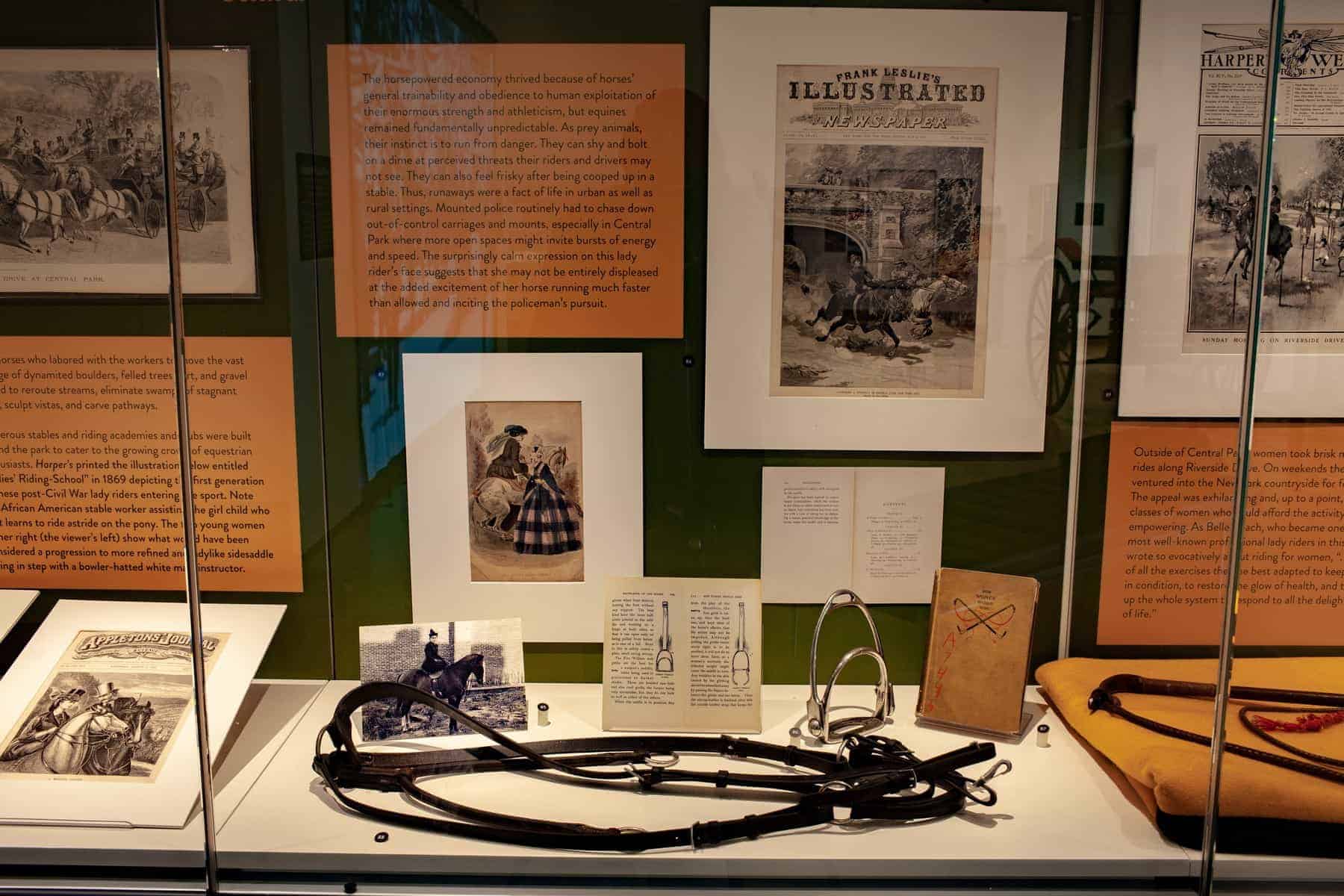
The horsepowered economy thrived because of horses’ general trainability and obedience to human exploitation of their enormous strength and athleticism, but equines remained fundamentally unpredictable. As prey animals, their instinct is to run from danger. They can shy and bolt on a dime at perceived threats their riders and drivers may not see. They can also feel frisky after being cooped up in a stable. Thus, runaways were a fact of life in urban as well as
rural settings. Mounted police routinely had to chase down out-of-control carriages and mounts, especially in Central Park where more open spaces might invite bursts of energy and speed. The surprisingly calm expression on this lady rider’s face suggests that she may not be entirely displeased at the added excitement of her horse running much faster than allowed and inciting the policeman’s pursuit.
In the case:
Each object in the cases is marked with a corresponding number unless otherwise noted.
83. “Les Modes Parisiennes,” Peterson’s Magazine (c. 1870s-80s)
Marra Collection
Horses could foster and mediate passions between persons of the same as well as opposite sex. In this Victorian
illustration of two women touching hands over the horse’s body, the riding style is English, but the implied mode of intimacy is French.
84. “Capturing a runaway in Central Park, New York City,” Leslie’s Illustrated Newspaper (May 2, 1891)
Marra Collection
85. Woman sitting sidesaddle, West Union, IA, ca. 1890
Reproduction
State Historical Society of Iowa – Iowa City
This lady’s sidesaddle equestrianism in Iowa reflects both national and local trends, as the bridle and saddle combine
English and Western influences.
86. Antique Victorian Sidesaddle Stirrup Iron with Scott’s Patent Safety – 47102. Size 3.
Marra Collection
Imported from England. This stirrup features a safety arch designed to keep the foot from slipping forward through the stirrup, which could dangerously catch the lady’s foot and cause her to be dragged should she fall from the saddle. The safety arch is also hinged so that it opens, as shown in this drawing, to release the foot when pulled backward in the event of a fall.
87. How Women Should Ride, C.De Hurst, originally published 1892
On loan from the Center for Research Libraries
The tone expressed in the Introduction and Table of Contents of this text reflects some of the condescending and sexist attitudes of male authorities trying to control female equestrianism in this era.
88. Leather breastplate and running martingale
Marra Collection
